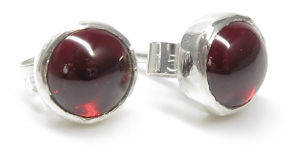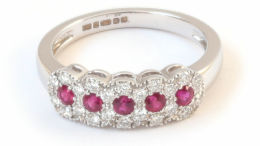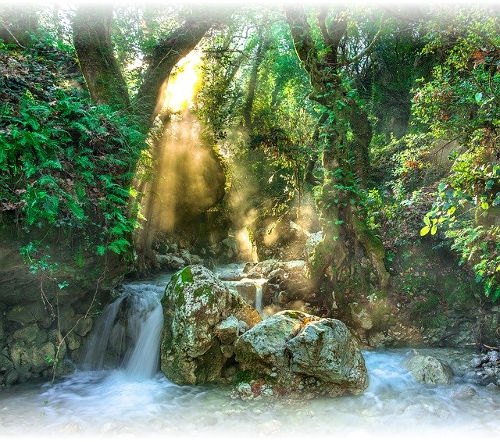Even as far back as the Roman Empire, Garnets have been used in jewellery. In fact, back then, they were a very common choice, in particular, red garnets. Still now, pure garnet crystals are a popular choice in jewellery. While it cannot quite be considered a precious stone, it remains a visually appealing choice.
Colour
Red may be one of the colours most commonly associated with garnets, but varieties in the colours of yellow, orange, and even green, occur. The latter, green, is considered to be a very rare variety of garnet.
Other colours such as black, pink, purple, and even blue, also exist but are not very common. Particularly, a blue garnet is highly rare – perhaps even more so than green. Finally, garnets can also appear colourless.

Varieties
There are many varieties of garnets and it can be said that the word "Garnets" refers to a family of similar, but not identical, gemstones which are separated into different families and varieties. Below you can find some of the more interesting varieties of the stone.
Tsavorite is the name often used for green garnets. These stones are quite rare, and tend to be some of the finest and most valuable garnets. As such, they can be desirable gemstones for jewellery wearers seeking something a little different. Their colour can often resemble Emeralds.
It is worth noting that Tsavorites are not the only green garnets. A different, separate green garnet exists under the name Uvarovite. Both are rare, but their shades of green tend to differ and they have slightly different characteristics as far as various factors such as hardness are concerned.
Demantoids, another variety of garnet stones, exhibits a vibrant green tone. Its impressive brilliance and dispersion may have contributed to its name, which comes from the French word demant which means diamond. Indeed, some of their visual characteristics may resemble diamonds.
Topazolite tends to be a brownish-yellow tone. Particularly notable is the fact that some of these stones are of high enough quality to be cut into faceted gemstones. However, they are more rare than demantoids.
Melanites, in contrast, tend to exhibit dark red or black tones. Despite this, they are considered to be part of the same 'family' as demantoids and topazolites.
Properties
Garnets are one of the harder gemstones, ranging from 6.5 to 7.5 on the Mohs hardness scale. Unlike some gemstones, garnets have a variety of appearances: some are opaque while others are transparent. Generally, it is the transparent stones that are used in jewellery.
Use
Garnets are used not only in jewellery for their visual characteristics, but also in industrial applications. Opaque stones find their application to create garnet sand, which as an abrasive is an excellent replacement for silica sand in sand blasting. Some rarer, and particularly impressive varieties of these stones may be sought after by collectors to keep as a faceted gemstone.
Synthetic Garnet
Like most other gemstones, Garnets too can be synthesized in a laboratory. However, their use for jewellery nowadays seems to be significantly lesser than that of Cubic Zirconia. In fact, until cubic zirconia crystals could be easily synthesized, a variety of garnet stones called an yttrium aluminium garnet was used to simulate diamonds.









